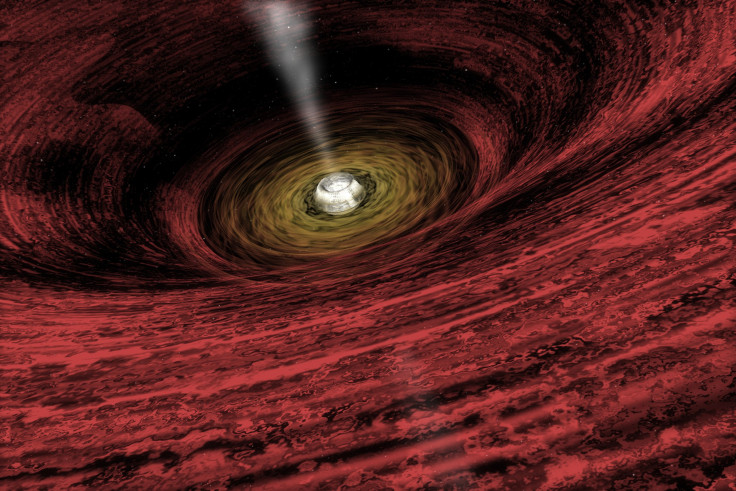Astronomers Observe Supermassive Black Hole Expelling Fast Stream Of Gas

A team of astronomers has used data from several NASA and European Space Agency, or ESA, space observatories to discover “unexpected behavior” by a supermassive black hole located at the heart of a galaxy called “NGC 5548,” which is 244.6 million light-years from Earth.
Following the discovery of the NGC 5548 galaxy by NASA’s Hubble Space Telescope in June 2013, astronomers detected an unusual, fast-moving stream of gas flowing outward from the galaxy's supermassive black hole, which was blocking 90 percent of its X-rays emissions. According to astronomers, the new discovery could help them better understand how these gigantic black holes interact with their host galaxies.
“The data represented dramatic changes since the last observation with Hubble in 2011,” Gerard Kriss of the Space Telescope Science Institute in Baltimore, Md., said in a statement. “I saw signatures of much colder gas than was present before, indicating that the wind had cooled down due to a significant decrease in X-ray radiation from the galaxy's nucleus.”
As part of the study, published in Science Express on Thursday, astronomers analyzed data from six sources, including NASA's Swift spacecraft, the Nuclear Spectroscopic Telescope Array and the Chandra X-ray Observatory, and found that supermassive black holes located at the center of their active galaxies eject large amounts of matter through powerful winds made of ionized gas. According to the astronomers, these new winds are much stronger and faster than the persistent wind of NGC 5548, which reaches velocities exceeding 621 miles.
“These new winds reach speeds of up to 3,107 miles (5,000 kilometers) per second, but is much closer to the nucleus than the persistent wind,” Jelle Kaastra, lead scientist at the SRON Netherlands Institute for Space Research, said in a statement. “The new gas outflow blocks 90 percent of the low-energy X-rays that come from very close to the black hole, and it obscures up to a third of the region that emits the ultraviolet radiation at a few light-days distance from the black hole.”
The latest discovery, scientists say, also provides the first evidence of a type of shielding process that helps to accelerate the powerful gas streams. The shielding in NGC 5548 is believed to be active for at least three years, according to astronomers.
“There are other galaxies with similar streams of gas flowing outward from the direction of its central black hole, but we've never before found evidence that the stream of gas changed its position as dramatically as this one has," Kriss said.
© Copyright IBTimes 2024. All rights reserved.






















